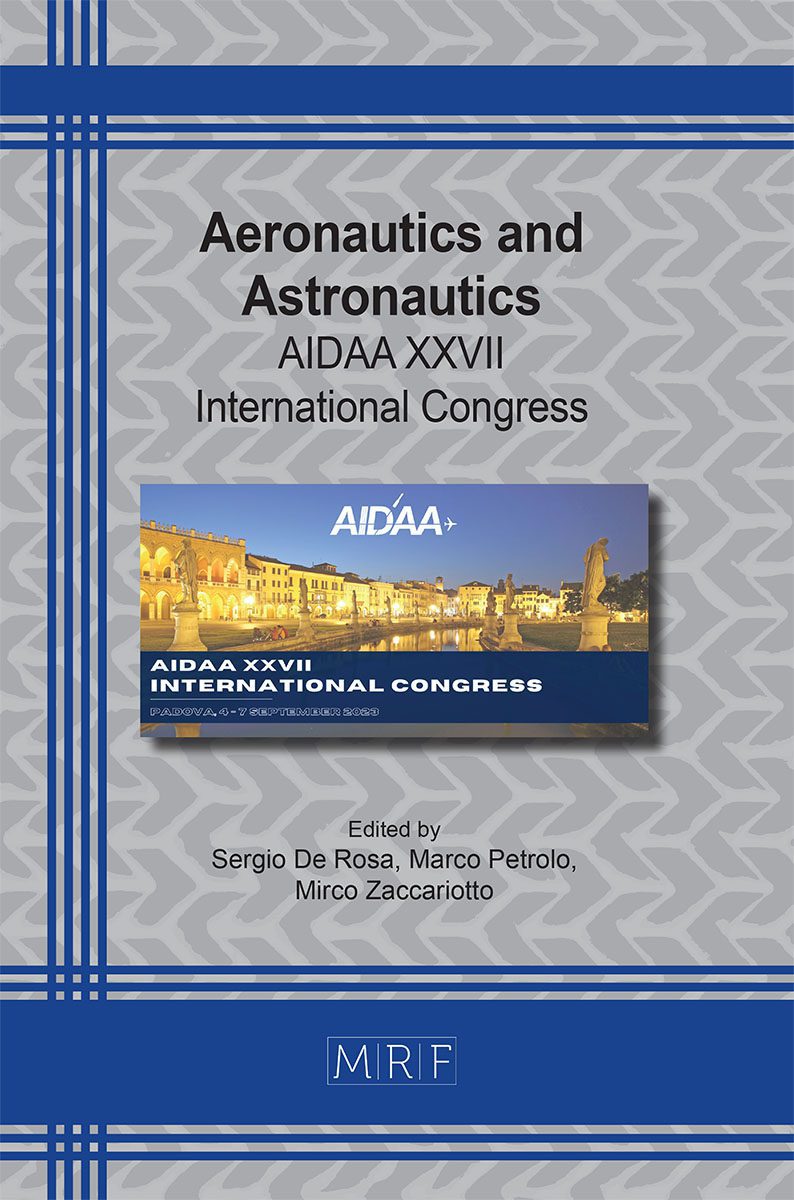Experimental investigation of the noise emitted by two different propellers ingesting a planar boundary layer
Michele Falsi, Ismaeel Zaman, Matteo Mancinelli, Stefano Meloni, Roberto Camussi, Bin Zang, Mahdi Azarpeyvand
download PDFAbstract. Novel-aircraft concepts consider the possibility of placing the propulsor very close to the fuselage to ingest the incoming airframe boundary layer. In this configuration, the engine takes in flow at a reduced velocity, thus consuming less fuel in the combustion process. However, this induces a series of noise consequences that alter the noise perceived by an observer. The present work reports an experimental investigation to compare the far-field noise directivity emitted by two different propellers ingesting a boundary layer at two different states. The experiments have been performed in the anechoic wind tunnel at the University of Bristol. The experimental setup consists of a propeller placed in the proximity of a tangential flat plate, which represents a simplified model of a fuselage. Two tripping devices placed 1 m (6.5 rotor radii) upstream of the propeller have been used to generate distinct boundary layer thicknesses. Results from two distinct propellers with three and five blades have been compared, varying the advance ratio J from 0.56 to 0.98. Far-field noise has been acquired using a microphone array positioned in the plate plane. The data have been analysed in the frequency domain, providing an extensive characterization of the far-field directivity. Results show a general increase in noise when the propeller ingests a thicker boundary layer. Furthermore, a change in directivity pattern is observed varying the advance ratio, suggesting a variation of the underlying physics. Finally, considering different J, the overall noise emission appears to be dependent on the number of blades.
Keywords
Aeroacoustics, Rotor Noise, Boundary Layer Ingestion
Published online 11/1/2023, 4 pages
Copyright © 2023 by the author(s)
Published under license by Materials Research Forum LLC., Millersville PA, USA
Citation: Michele Falsi, Ismaeel Zaman, Matteo Mancinelli, Stefano Meloni, Roberto Camussi, Bin Zang, Mahdi Azarpeyvand, Experimental investigation of the noise emitted by two different propellers ingesting a planar boundary layer, Materials Research Proceedings, Vol. 37, pp 17-20, 2023
DOI: https://doi.org/10.21741/9781644902813-4
The article was published as article 4 of the book Aeronautics and Astronautics
![]() Content from this work may be used under the terms of the Creative Commons Attribution 3.0 license. Any further distribution of this work must maintain attribution to the author(s) and the title of the work, journal citation and DOI.
Content from this work may be used under the terms of the Creative Commons Attribution 3.0 license. Any further distribution of this work must maintain attribution to the author(s) and the title of the work, journal citation and DOI.
References
[1] Smith L, 1993, Wake Ingestion Propulsion Benefit, Journal of Propulsion and Power 9 74–82. https://doi.org/10.2514/3.11487
[2] Ahuja J and Mavris D, 2021, A Method for Modeling the Aero-Propulsive Coupling Characteristics of BLI Aircraft in Conceptual Design, AIAA Scitech Forum 2021. https://doi.org/10.2514/6.2021-0112
[3] Yildirim A, Gray J, Mader C and Martins J, 2021, Performance Analysis of Optimized STARC-ABL Designs Across the Entire Mission Profile, AIAA Scitech Forum 2021. https://doi.org/10.2514/6.2021-0891
[4] Zaman I, Falsi M, Zang B, Azarpeyvand M and Camussi R, 2023, Experimental Parametric Investigation of the Haystacking Phenomenon for Propeller Boundary Layer Ingestion, AIAA AVIATION 2023 Forum. https://doi.org/10.2514/6.2023-4054
[5] Zaman I, Falsi M, Zang B, Azarpeyvand M and Camussi R, 2023, Effect of Tip Gap on Nearfield and Farfield Acoustics of Propeller Boundary Layer Ingestion, AIAA AVIATION 2023 Forum. https://doi.org/10.2514/6.2023-4055
[6] Mayer Y, Kamliya Jawahar H, Szoke M, Showkat Ali S and Azarpeyvand M, 2019, Design and Performance of an Aeroacoustic Wind Tunnel Facility at the University of Bristol, Applied Acoustics 155 358–370. https://doi.org/10.1016/j.apacoust.2019.06.005































